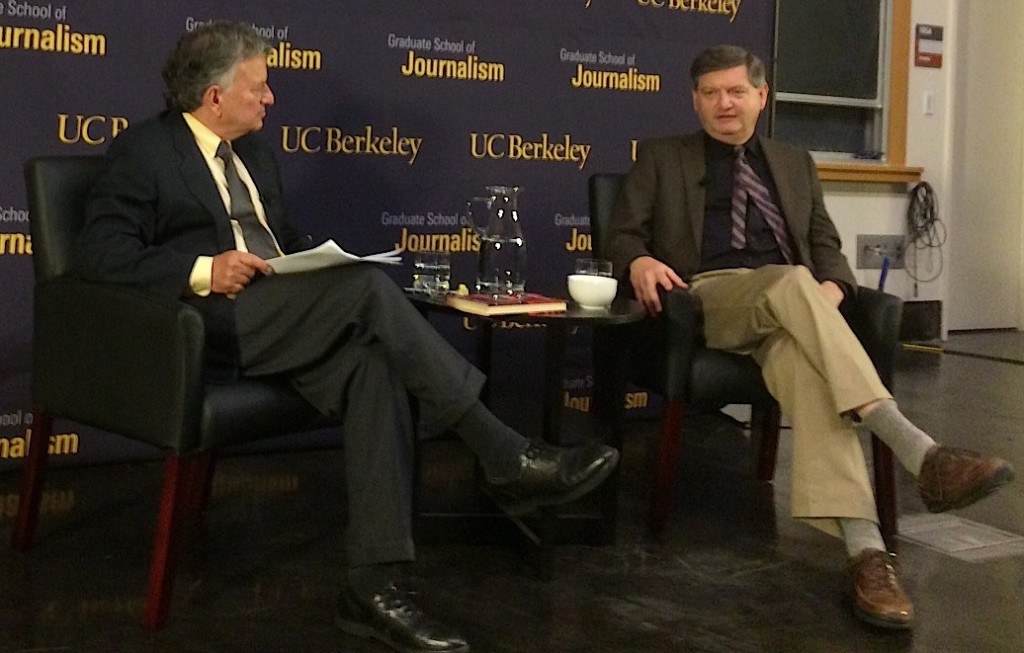 There are many answers to the question: What’s working in journalism?
There are many answers to the question: What’s working in journalism?
CNN and Fox News appear to be strongly churning along, there is an explosion of experimentation and it has never been easier for people to access the technology necessary to create and share rich-media and on-the-ground reporting from around the world. But despite all of this, our news ecology remains in crisis.
For the past six months, I’ve reported on what’s working in our news and information ecology and also explored what’s possible as part of the The Illuminations Project. When we started the project, I had a sense of where journalism was working, but with no clear metrics to define success I jumped in and figured we’d wait to start sketching the portrait of success.
So now that we’ve got something to work with, I decided it was time to start drawing that picture.
As I reread the posts in the blog, certain selections seemed to fit together and I began crafting categories to encompass them. I ended up with the following list of categories:
- Economic Sustainability
- Engagement and Community
- New tools and techniques
- Press Freedom Issues
- Journalism ethics, objectivity and the public’s perception
- Journalism education
- Organizational posts about JTM
After refining my list down to these seven categories I put each story in whatever categories seemed a good fit.
- Economic Sustainability
- Engagement and Community
- Community Journalism to Debug the system
- Project Censored: Illuminating untold stories
- Fighting Comment Cancer
- An Interview with Dan Gillmor
- Engineering Chance Encounters in Online Spaces
- A Radical Approach to Comments
- Fighting for the Soul of San Francisco
- Unleashing the possibilities of the APs new live video initiative
- GeekWire Profitable after only two years
- New tools and techniques
- Journalism ethics, objectivity and public perception
- Journalism Education
- The Illuminations Project and other organizational posts
- Collaboration across organizations
After talking to JTM Board members Peggy Holman and Mike Fancher about my findings, we agreed that an eighth category focused on the increasing collaborations that have recently blossomed was warranted. Although we haven’t covered this area in past Illumination columns, it is an area that has demonstrated success and will be explored in the coming months.
One of the main purposes behind the Illuminations Project is to identify successful initiatives and organizations in order to distill examples that can be applied in other situations and to similarly identify solutions to common problems facing journalists and news organizations today.
We also decided that the success stories we illuminate should exemplify the values of Journalism that Matters. JTM’s mission is to foster collaboration, innovation, and action so that a diverse news and information ecosystem can thrive. For example, although TMZ appears to be economically successful, its wall-to-wall celebrity coverage is hard to justify beyond entertainment and titillation.
But what if TMZ used its revenue to finance a news organization doing real journalism about real issues? I actually think that TMZ does some great reporting, but when the subject is a celebrity’s attire, or even their untimely demise, it’s hard to call it journalism that matters. But let’s say the company took it’s trademark Thirty-Mile Zone approach to Washington DC. Just imagine what stories a team of reporters who essentially cover our elected leaders every move might break.
That might not happen anytime soon, but what about BuzzFeed? The Website has generated insane traffic by churning out derivative dribble laced with animated gifs and articles, or listicles, crafted to infect social networks with their viral click-bait. But if you visit BuzzFeed right now, you’ll see a new column labeled “Big stories.”
 Right next to “The 30 Greatest Moments in the History of Cute” and “Since When is Telling a Woman to Eat your Dick Standing Up for Service Workers” is original reporting about the arrest of Palestinians protesting their eviction and a report that Russian LGBT Activists have called on the president of the Olympics to speak about Russia’s “Gay Propaganda law.” Both stories are written by seasoned reporters with experience as foreign correspondents.
Right next to “The 30 Greatest Moments in the History of Cute” and “Since When is Telling a Woman to Eat your Dick Standing Up for Service Workers” is original reporting about the arrest of Palestinians protesting their eviction and a report that Russian LGBT Activists have called on the president of the Olympics to speak about Russia’s “Gay Propaganda law.” Both stories are written by seasoned reporters with experience as foreign correspondents.
Is this an example of what’s working in journalism that JTM should profile in the Illumination blog? I guess that depends on whether there is a lesson that can be applied by news organizations.
Of course, many news organizations have already jumped headfirst into their version of Buzzfeed’s content, and I imagine I’m not the only one who cringes when I see it creep into the sites I visit every day. But if “The 30 Greatest Moments in the History of Cute,” and “15 Reasons you Definitely Can’t Go To The Gym Today” can generate the revenue needed for real meaningful journalism then maybe the increased noise is just an unfortunate cost of producing journalism that would not otherwise exist.
I do feel sorry for the poor souls stuck writing the drivel to keep their peers employed though. Maybe the reporters could take shifts?
***
The Wordles at the top and bottom of this post were created by importing all of the text from each of the articles published on the Illuminations blog.


